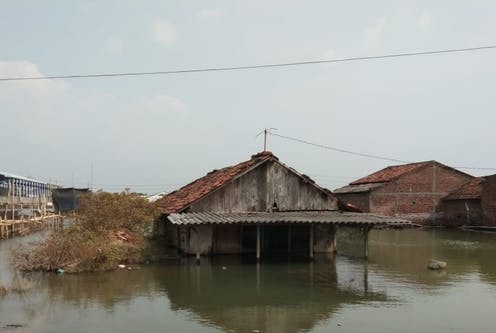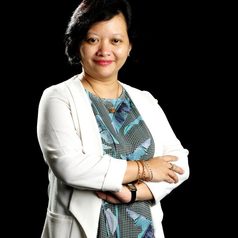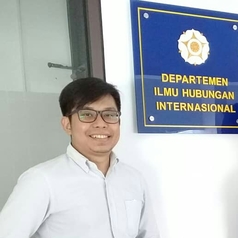Situated in the Pacific Ring of Fire, Indonesia is prone to earthquakes, volcanic eruptions, tsunamis and floods. But despite being constantly at risk of various catastrophic natural events, Indonesia’s disaster management is still poor. This is mainly triggered by a lack of coordination between government agencies. In disaster-prone Indonesia, this kind of bureaucratic mishap takes its toll on victims and prevents them from getting help.
Last month, a lack of coordination from local governments disrupted the distribution of aids and logistics for the victims of earthquakes in North Lombok, West Nusa Tenggara.
The latest series of earthquakes that rattled Central Sulawesi and killed thousands are a reminder on the importance of effective disaster management.
Our recent research on disaster management in Semarang, Central Java, showed that effective disaster management is possible with the support of the public.
Semarang’s situation
Having the longest coastline in the world, Indonesia is prone to tidal flooding, and cities in the northern coast of Java have been severely impacted. A 2007 study by Muhammad Arif Marfai of Gadjah Mada University shows that tidal flooding in Semarang is more intensive and destructive compared to other cities in the northern coast of Java, such as Pekalongan.
The flood has disturbed various social and economic activities. One sub-district in Semarang has suffered a loss of Rp 7 billion annually since 2016.
Following the 2004 tsunami in Aceh, Indonesia has established local agencies to handle natural disasters. In 2008, Central Java provincial administration established disaster management offices at provincial and municipal level.
However, our interviews and focus group discussions between April and July 2018 with the related agencies in Central Java showed a lack of coordination between these local government bodies.
For example, the local agencies differ in interpreting tidal flooding as a disaster. This leads to a slow response in handling the aftermath of tidal floodings.
The disagreement also represents tension between the provincial government and the municipality. It seems that the provincial government, with its budgeting constraints, intends to pass the responsibility to the Semarang municipality. Meanwhile, the city administration demand more supports from the Central Java government.
The politics of disaster
Our interviews with the Center for Coastal Rehabilitation and Disaster Mitigation Studies (CoREM) at Diponegoro University in Semarang, Indonesian Journalists Association and a local newspaper, Tribun Jateng, showed that local politicians did not really care about tidal flooding.
Most political candidates visited the flooded areas only to sell promises. Once elected, they suffer no political consequences even though they fail to keep their promises in tackling coastal flood. Issues on disaster are not influential enough to sway votes.
Civil society saves the day
Until the government improves its disaster management, the solution may come from the public.
Our research in Semarang shows how public’s initiatives responding to tidal flooding can provide solutions to problems arising from the local governments’ lack of coordination in disaster management.
Local civil society organisations have carried out projects to prevent the floods from getting worse. Non-profit institutions such as Kasemat and Ikamat have voluntarily planted mangroves to reduce damage caused by floods and tides on coastal areas.
Meanwhile, young people have joined Lentera Pasir to voluntarily work in educating children living in Tambak Lorok, an area affected by the floods.
Young startup entrepreneurs called Barcode help CoREM in developing a mobile phone application called Rob Calendar (Rob is a Javanese word refers to tidal flooding). The application can warn people living in Semarang coastal area if the disaster is coming. This application can be downloaded for free at Google Playstore.
These initiatives are possible due to support from local media institutions. Local media in Semarang such as Suara Merdeka and Tribun Jateng have reported the tidal flooding from different angles to keep people well-informed. More media exposure can increase public awareness so people will hold politicians accountable for their promises on disaster issues.
Economist and philosopher Amartya Sen states in his book, Development as Freedom that a society with a more vibrant democracy is more likely to succeed a catastrophic crisis than one living under a dictatorship. He posits that well informed people can disseminate warnings or important notices.
In the case of disaster management, a well-informed society can launch numerous initiatives to support the government in handling natural disasters.

The authors do not work for, consult, own shares in or receive funding from any company or organisation that would benefit from this article, and have disclosed no relevant affiliations beyond their academic appointment.
Hermin Indah Wahyuni, Associate Professor of Communication Science, Universitas Gadjah Mada, Universitas Gadjah Mada
This article was originally published on The Conversation. Read the original article.




 What if whales took us to court? A move to grant them legal personhood would include the right to sue
What if whales took us to court? A move to grant them legal personhood would include the right to sue  Gym hygiene guide: the dangerous bacteria that lurk in dirty fitness equipment and clothes
Gym hygiene guide: the dangerous bacteria that lurk in dirty fitness equipment and clothes  'Gold' hydrogen: natural deposits are turning up all over the world – but how useful is it in our move away from fossil fuels?
'Gold' hydrogen: natural deposits are turning up all over the world – but how useful is it in our move away from fossil fuels?  8 ways to tone down the Christmas lights to help wildlife – and why we should
8 ways to tone down the Christmas lights to help wildlife – and why we should  Crocs love feral pigs and quolls have a taste for rabbit – but it doesn't solve the invasive species problem
Crocs love feral pigs and quolls have a taste for rabbit – but it doesn't solve the invasive species problem  Is attachment theory actually important for romantic relationships?
Is attachment theory actually important for romantic relationships?  Rogue waves in the ocean are much more common than anyone suspected, says new study
Rogue waves in the ocean are much more common than anyone suspected, says new study  Climate change is warping the seasons
Climate change is warping the seasons  Will global oil supply be at risk if Iran and Israel pull the Middle East into war?
Will global oil supply be at risk if Iran and Israel pull the Middle East into war? 


































